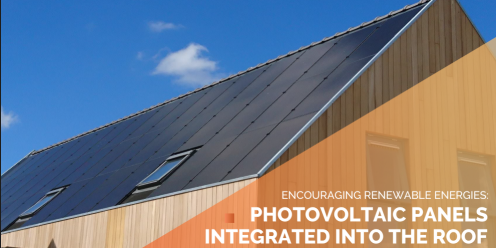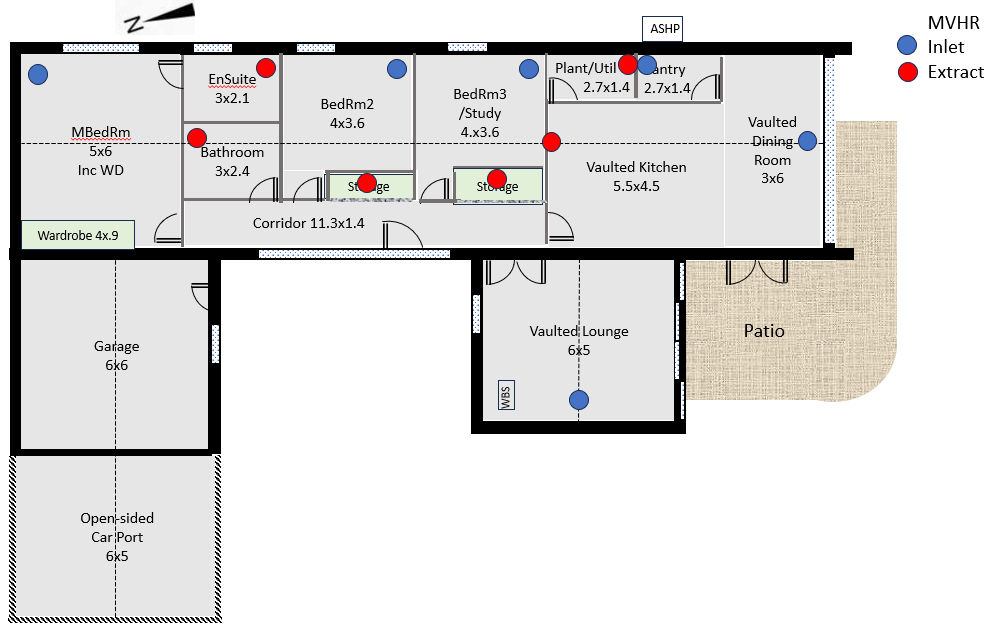
Stu789
Members-
Posts
33 -
Joined
-
Last visited
Everything posted by Stu789
-
Is the party over (pt2) - End of high fixed price export tariffs?
Stu789 replied to -rick-'s topic in Photovoltaics (PV)
As home-owner battery storage capacity grows then a shift to time based export tariffs would seem to make sense for both supplier and domestic consumer - it would incentivise exporting domestic battery capacity back into the grid at peak consumption hours (EG 7-9am and 4-8pm exports get a premium rate) reducing demand spikes and better meet grid level needs vs the flat rates that have been available until now (IE consumer battery storage can be rewarded for participating in evening out grid demand). IIRC other geographies have stopped paying for export during daytime or sunny days. -
I've had the opposite experience - NG suggested 3 phase from the off even when I'd listed the main loads which would have fitted within 80A 1P. Given it gives 3x the car charger throughput and 3x the PC export under G98 etc I'm very happy to go with their suggestion.
-
How much timber cladding is too much timber cladding?
Stu789 replied to JCL's topic in New House & Self Build Design
I've heard this 50% number a few times - anyone know does this apply to bungalows as well? Thx -
Interesting discussion which aligns with the SWMBO conversation which boiled down to... - do conventional wiring with standard switches and sockets - use plug in smart switches in sockets where useful (we have used these in the current house for the past 2-3 years) - choose doorbells and CCTV that work with apps as well as Home Assistant - collect and display data from air quality sensors, MVHR, inverter, ASHP in Home Assistant Then there is no reliance on Home Assistant for current or future owners... without it you have conventional electrics and the standard control panels or apps for the MVHR, solar, CCTV etc
-
If you are wanting to monitor liquid levels in a tank/inspection chamber then a ME201WZ Level Sensor might be of interest - can get wifi and zigbee versions, EG here I'm looking at this for monitoring rainwater tank level.
-
Has anyone found a good solution for securing a smart switch in a patress box and having a momentary push-button mechanism that can activate the central switch to toggle the switch / put the switch into pairing mode? It would be something like a dimmer switch but only needs the push-button, spring and plunger. Currently working through Home Assistant and Zigbee/MQTT with various sensors, switches & integration to convince SWMBO that an integrated HA based smart house can be made simple & fool-proof enough that she (and future occupiers) wouldn't be put off! Thanks
-
Following fairly encouraging pre-app advice on a bungalow backfill at our existing property we are putting a full planning application together hoping to self-build next year. As part of budgeting through the build I was wanting to get a handle on the various taxes we are going to deal with and associated timing. Here is my list and thoughts to date... CIL - £0 provided that exemption forms are submitted & acknowledged before work starts & at end (intending to live in the house for >3 years) VAT - one claim within 6 months of BC sign-off (+ zero rated supplies as you go) Council Tax - due once new build is habitable or signed off by BC? As we will own the existing property and the new bungalow for a while does one CT get charged at a higher rate? CGT - No CGT liability if existing property sold within 9 months of completing bungalow (Private Residence Relief), beyond that pro-rata CGT for the period beyond the 9 months based on an assumed straight line price growth from original purchase to eventual sale date Have I missed anything else? (of course some of this could change come Nov budget 🙃) Thanks
-
Fill your roof with in-roof PV panels instead of pantiles?
Stu789 replied to Alan Ambrose's topic in Photovoltaics (PV)
On fire safety GSE panel MCS certification includes Fire Classification BROOF(t4) part of BS EN 13501-5 - useful explanation here but TLDR is: BROOF(t4) No penetration of roof system within 60 minutes In preliminary test, after withdrawal of the test flame, specimens burn for less than 5 minutes In preliminary test, flame spread less than 0.38 m across region of burning and BROOF(t4) Unrestricted; can be used anywhere on the roof Back to filling the whole roof with PV panels... does anyone have experience of doing this with GSE half frame system on a sloped roof? GSE install instructions & configurator show 170mm flashing/finishing to each side + 160/150 bottom and top but then elsewhere show the detailing for straight to the gutter - a bit of a contrast to the architect glossy cover photo! -
Impact on listed buildings - *any* harm is reason to refuse planning?
Stu789 replied to Stu789's topic in Planning Permission
Thanks @torre - local employment of trades during construction is something we would look to be oing so worth mentioning. Both council and village have current core strategy & neighbourhood plan but there are points in those that support us. In his preapp report the planning officer did include a page of detail on case law references on how ‘personal circumstances’ of the applicant could be considered as relevant material considerations and that how much weight that would carry is determined by council planning as decision makers - I'd like to think he is trying to be helpful whilst also impartial/non-commital etc. -
Does anyone have any experience in gaining planning permission when there would be less than substantial harm to a heritage asset? We have had a pre-app response to a wheelchair adaptable self-build bungalow development which would be a backfill in part of a large rear garden of a grade II listed house - the Planning Officer concludes: "whilst the principle of development is acceptable, and the proposal would result in the development of 1no. self-build dwelling, less than substantial harm to the setting of heritage assets has been identified. As such, and taking account of paragraph 212 of the NPPF, I do not consider the proposed development to be acceptable." That seems a very harsh interpretation of Para 212 for a grade II listed building. 212. When considering the impact of a proposed development on the significance of a designated heritage asset, great weight should be given to the asset’s conservation (and the more important the asset, the greater the weight should be). This is irrespective of whether any potential harm amounts to substantial harm, total loss or less than substantial harm to its significance. Conservation officer raised 4 concerns which we can mitigate to some extent but even as assessed he concludes "the level of harm would less than substantial as defined by the NPPF" He cites NPPF Para 215: "Where a development proposal will lead to less than substantial harm to the significance of a designated heritage asset, this harm should be weighed against the public benefits of the proposal including, where appropriate, securing its optimum viable use." The public benefits (in line with Council policy and neighbourhood plan) I can think of: - Neighbourhood Plan & Council Core Strategy - Increasing stock of an under-provided dwelling type (bungalow) - Council Housing Strategy - Aim2: Enabling people to live independently - Neighbourhood plan - Creating vacancy in a larger property We prepared the pre-app ourselves (with some much appreciated input from @ETC), this feels like a situation where a planning consultant might be needed... Any ideas would be welcome. Thanks Stuart
-
Economics of DIY and Self Building
Stu789 replied to Gus Potter's topic in General Self Build & DIY Discussion
Exactly the attraction for me embarking on self-build - I have the skills for PM & some of the trades, time to be on-site & source materials at best prices and attention to detail for workmanship, site condition/safety & invoicing/record keeping. But also don't want to toil for 000s of hours to see no market/resale value for that effort because the economics didn't stack up! -
Anyone used MVHR floor vents?
Stu789 replied to Alan Ambrose's topic in Mechanical Ventilation with Heat Recovery (MVHR)
kitchen-dining room is open plan, no wall. Thanks - makes sense. Admittedly not clear in the drawing but the storage spaces are in the corridor and are intended for potentially wet items (wheelchair, coats, golf clubs, driven by Part M wheelchair user dwelling). For Plant & Pantry the transfer grille and S/E valves far apart sounds a good route, thanks. The attic space is inside the airtight envelope. -
Anyone used MVHR floor vents?
Stu789 replied to Alan Ambrose's topic in Mechanical Ventilation with Heat Recovery (MVHR)
Thanks for the suggestions above. Here is the current bungalow floor plan showing my first pass at MVHR inlet & extract points - comments/suggestions invited. Planning to site the MVHR unit above bedroom 3 as attic trusses above non-vaulted space will provide plenty of room & its central. I think the dining room inlet could be fed up an enlarged service void from the pantry or maybe easier is along the apex from above bedroom 3 to the dining room outlet in both cases AE35 or AE45 oval ducting reduce the space required. -
Anyone used MVHR floor vents?
Stu789 replied to Alan Ambrose's topic in Mechanical Ventilation with Heat Recovery (MVHR)
I'm of the same view as long as it doesn't make the service void massive. Thx -
Anyone used MVHR floor vents?
Stu789 replied to Alan Ambrose's topic in Mechanical Ventilation with Heat Recovery (MVHR)
Dining room will be at end of the building, only connected to the kitchen. -
Anyone used MVHR floor vents?
Stu789 replied to Alan Ambrose's topic in Mechanical Ventilation with Heat Recovery (MVHR)
Anyone know if it would it be possible / have experience putting these & the associated AE35 ducting in a raft foundation floor? Planning an open kitchen-diner with vaulted dining room at the end of a bungalow and need MVHR feed-in at the far end of dining room to match with an extract over the kitchen sink. MVHR expert I spoke with said ducts in floors are used from time to time for vaulted rooms but we didn't talk about floor makeup. An alternative is route the AE35 ducting in the vaulted roof service void (which requires SV to be at least 50mm) but the grille adapter is then far too deep (287mm) for the SV. -
I recently made an application for new-build connection estimate with National Grid with very similar consumption to yours - they proposed 3 phase 60Amp per phase. They called me to discuss, we agreed desktop estimate given we are at pre-app stage and then they emailed details and called to followup - all very helpful. A little more cost for 3P CU but fast EV charging, greater draw and sell-back to grid to/from batteries and 3 phase hybrid inverter is a very small price premium & EV chargers are mostly common model for 1/3 phase.
-
Thanks - 3.7m generally and 3.1m minimum for a short distance seems to be a common requirement - that should be do-able without reducing the garage!
-
We are looking at building a backfill bungalow which would share existing access from the A-road so no issues with widths, set backs etc there & similarly at the bungalow there is room for turning circles etc. However the drive to access the back garden has a pinch point between the boundary wall and the side of the garage (just the front as the garage and boundary wall are not parallel). Does anyone know what minimum width requirements would be? Currently it is 2.9m at the pinch point which I'm pretty sure is too tight - depending on what is required we may have an easy solution (agreement to remove the kink in the boundary wall) to get to ~3.5 maybe 4m but otherwise it is make the wide double garage narrower which is possible but for obvious reasons I would prefer to avoid. TIA for any guidance/pointers
-
A big thanks to @ETC for spending time over the past couple of weeks to produce drawings and provide suggestions to improve our initial ideas! Really appreciate the assistance!
-
Does anyone have recommendations on SIP/TF companies to seek out at the Housebuilding show at NEC next week? We briefly looked at Kingspan and Scotframe at the NSBRC but looking more seriously now. Planning a bungalow for an infill project in the midlands, most likely brick outer skin, pitched roof. We have a preliminary plan/layout but have some flexibility, about 150-160m2 + garage/carport. Previous builds we've done (managed) have been brick and block but SIPs or TF looks interesting for the usual reasons. Thanks in advance
-
+ for other kit, panels and batteries are improving quick enough that 2nd hand doesn't seem to make sense. As I read it inverters have a shorter life and are a small part of the overall cost (if you are including batteries) + split warranty gives you the potential for finger pointing in the event of issues.






